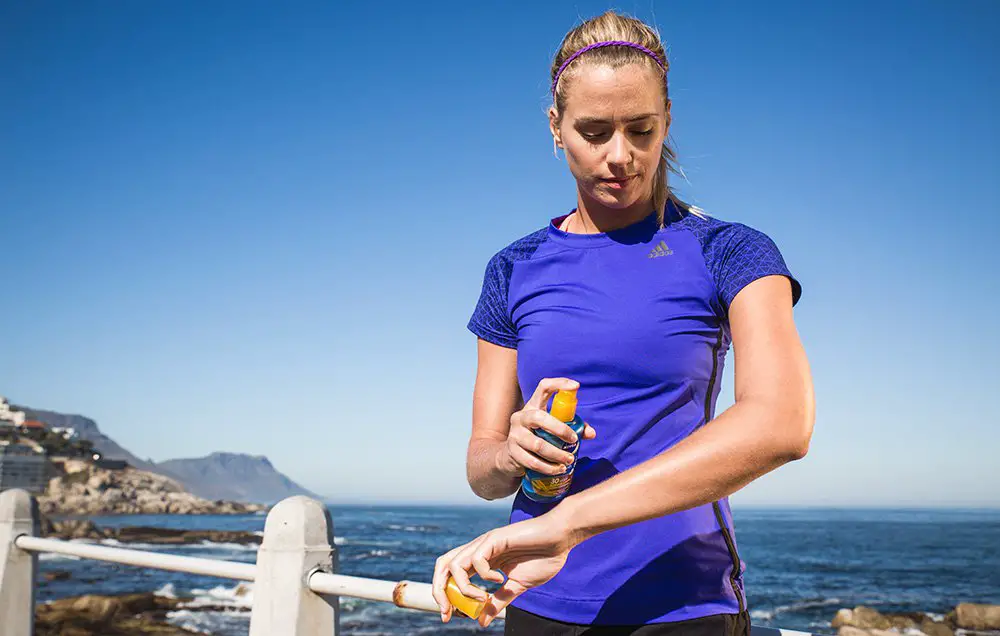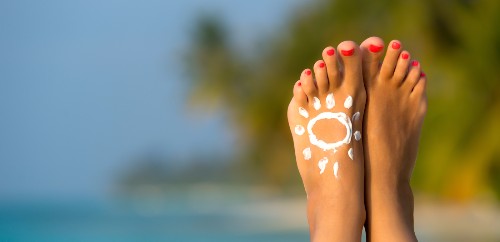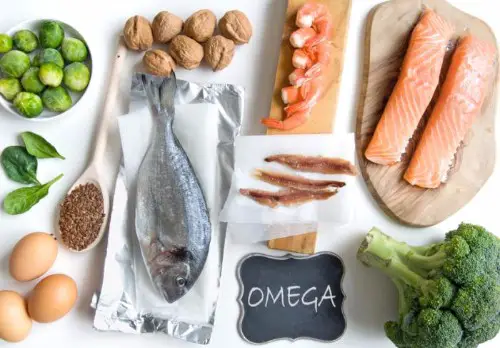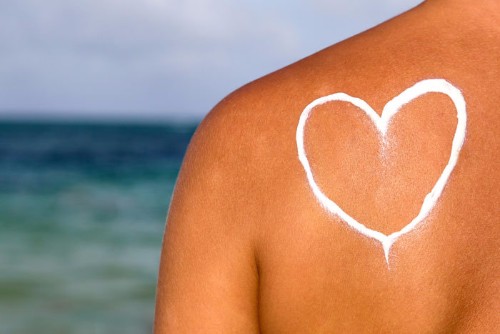Is it the season for having fun in the sun where you are? There’s no denying being out in the summer sun feels good for us, both mentally and physically.
Whether you like to lounge on the beach, go for sweaty hikes, or cool off in the pool with a drink in hand, sunny days are are prime time for kicking back and catching rays.
However, as well as the goodness of vitamin D and positive vibes, the sun poses a few risks. To prevent the dangers of skin cancer and sunburn, we are kindly reminded to use sunscreen.
But is it as simple as that?

Actually, it’s not as simple as going to the store and picking whatever sunscreen works best. There are a good deal of very important elements those sunscreen devotees aren’t telling us about, especially when it comes to keeping our skin safe from burns and cancer.
See, skin cancer rates are rising at approximately 4.2% per year while we’re spending LESS time outside and using MORE sunscreen. What’s the missing piece of the puzzle here?
Fun facts about the sun – differentiating rays

It’s important to note the difference between the sun’s two types of rays – UVB rays and UVA rays.
- UVA rays: Weaker light overall. Can still cause cancer, but they’re not powerful enough to break chemical bonds; they can turn electrons into free radicals that damage the cell’s genes, though. These rays don’t cause sunburn, so they don’t factor into SPF on sunscreen. You can protect against UVA rays effectively with zinc oxide.
- UVB rays: Radiation from UVB rays are proven to cause cancer; this has been known since 1928. Intense UVB penetrates the nuclei of cells (unlike UVA rays) and breaks the chemical bonds of DNA, causing mutation. Cancer forms when the mutations take place in a part of the DNA that controls cell reproduction.
Only three of the seventeen FDA-approved ingredients found in sunblock protect against UVA rays, and nine of those ingredients protect against UVB rays.
Another five ingredients come together to protect against both simultaneously. Considering this knowledge, it makes sense that we would believe sunblock is also protecting us against skin cancer. It’s not that simple, though.
Why most sunscreen isn’t safe

If sunscreen is protecting our bodies from cellular mutation – and thus protecting us from melanoma – then what’s so wrong with the stuff?
Turns out, it might actually increase risk of skin cancer. Take into consideration, we aren’t referring to ALL sunscreens. We have plenty of non-toxic recommendations for you later.
It comes down to ingredients, but the chemical barrier can cause a lot more potential risks than something that’s supposed to decrease our likelihood of developing health issues.
- Sunscreen relies on a chemical barrier. This means the barrier between your sun and your skin is made up of chemicals, namely oxybenzone, avobenzone, octisalate, octocrylene, homosalate, and oxtinoxate.
- These chemicals can cross skin. Kinda scary, right? Our skin is permeable, and it’s our largest organ. The chemicals can then cross into other bodily tissues, causing a whole slew of problems like…
- Hormone disruption. Oxybenzone, for example, is a chemical found in 96% of the population! It’s a well-known endocrine disruptor which can reduce sperm count in men, contribute to endometriosis in women, and impact hormonal health overall. This can be especially damaging for kids!
- Allergy reaction. Like with any chemical, there’s more likelihood that we’re going to have an allergic reaction or sensitivity.
- Can increase risk of skin cancer. The National Skin Cancer Institute cites ‘inadequate evidence’ in claims that sunscreen reduces risk of skin cancer, and in fact, it could potentially make that risk stronger.
- Sunscreen blocks vitamin D. Our bodies need vitamin D. 75% of people are deficient, so we’re clearly not making enough! Sunscreen can literally block the body’s ability to produce vitamin D, leaving us more deficient. Deficiency overall is linked to higher risk of most cancer and heart disease.
What makes sunscreen safe?

When looking for a safe sunscreen, it’s good to take into account whether or not it provides a mineral barrier. Unlike a chemical barrier, using zinc oxide and/or titanium oxide can create a physical barrier between skin and sun.
With a mineral barrier, we don’t have to worry as much about whether or not the mineral will permeate the skin or other body tissues because it doesn’t have the same negative impacts on hormones, and it generally won’t elicit an unpleasant allergic reaction unless the mineral base also contains chemicals.
This research on zinc shows that very little will reach past the epidermis which is a good sign.
The downside of mineral sunscreen is that it’s difficult to gauge true SPF. Many mineral-based sunblocks won’t boast an SPF 75+ label, instead falling around the SPF 30-50 mark which is simply a more accurate measurement than most labels.
This study shows that most SPF claims are considerably higher than the actual protection you’ll receive upon use.
Overall, not relying solely on sunblock to protect against cancer is the best approach to the sun.
We need a certain amount of sun each day for our bodies to create vitamin D – an essential nutrient that most people don’t get enough of – and the amount of time we can safely spend in direct sunlight with our skin exposed will increase with continuous exposure.
It’s good to start out around 15-30 minutes without protection, and move your way up. The best protection is lightweight, breathable clothing that covers burn-prone skin if you’re going to be out for long periods of time.
Internal sun protection

Diet plays a huge role in our body’s natural defense against the harmful UV rays of the sun. Omega-6 consumption has been linked to skin cancer, and the Standard American Diet ensures our omega-6 to omega-3 ratio is dangerously high.
Saturated fats, omega-3s, and monounsaturated fatty acids like those found in avocado oil regenerate skin tissue. When these are not found in proper amounts to counteract omega-6 fatty acids, the skin tissue will use those omega-6s instead which can cause mutation, ultimately leading to cancer.
A proper essential fatty acid balance doesn’t necessarily prevent sunburn, but prevents the sunburn from being as damaging by aiding the skin in healing more quickly and regenerating tissue, thereby preventing the mutations that may be the precursor to cancer.
Brands we trust

Now that we’ve covered the basics of choosing proper sun protection, we’re here to guide you on your way to a safe, fun, and sunny summer!
The big thing to remember when you’re looking at ingredients is to avoid the common chemicals used in chemical barrier sunblocks, and opt instead for mineral-based sunblocks.
Other additives might be present, but like with food labels, if it’s unfamiliar or you can’t pronounce it, it’s probably pretty toxic. Here are some of our top picks with all different levels of SPF, recommendations for the kids, and more.
Coral Safe Sunscreen (SPF 30) – Biodegradable, water-resistant, non-allergenic, and contains antioxidants to further protect against UV rays.
MyChelle Sun Shield (SPF 28) – Made with zinc oxide and vitamin E, a good mineral-based sunblock choice.
Raw Elements Eco Form Sunscreen (SPF 30+) – Hypoallergenic, reef safe, water-resistant up to 80 minutes.
Z Blok Sunscreen Stick (SPF 45) – Higher SPF than most mineral-based sunblocks, easy-to-use stick.
Andalou Natural Defense Lotion (SPF 18) – Moisturizer with natural sunblock to keep your skin healthy, everyday coverage.
For the kids
The kids need a little extra protection! It’s certainly important to reduce chemical harm to our skin and bodies, but it’s even more important with the kids.
It’s even more crucial to avoid toxic spray sunscreens, which may be ingested, and those chemicals aren’t doing the lungs any good.
Babyganics Pure Mineral Sunscreen Stick (SPF 50) – UVA & UVB resistant, non-allergenic, and just two ingredients.
Adorable Baby All-Natural Sunscreen (SPF 30+) – Made for babies, blocks UVA & UVB, mineral-based with natural oils and butters for moisture.
Read more from the EWG’s 2017 Guide to Safe Sunscreens.
We hope you’ve learnt a bit more about how to optimize protection from the sun. Using internal protection, covering up when needed, and relying on a natural, safe, and non-toxic sunscreen are the best ways to protect the skin from cancer.
Enjoy the sun (safely)!
Music, mountains, dogs, travel, food and friends.
